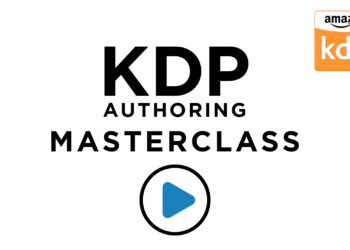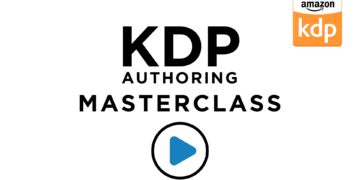If you’ve been pondering the idea of starting a side hustle—either to follow a passion, boost your income, or gain more financial security—there’s never been a better time than now. Starting a side hustle can seem daunting, but with a well-defined plan and the right mindset, it is entirely achievable. Here’s a step-by-step guide to help you navigate your way through the process.
Step 1: Identify Your Skill or Passion
Start by identifying your interests, hobbies, skills, or passions that you can convert into a profitable side hustle. Think about what you’re good at and enjoy doing. Your side hustle could be anything from online tutoring, freelance writing, graphic design, baking, or even dog walking. The key is to choose something you love and are skilled at, so it doesn’t feel like just another job.
Start with a brainstorming session. Write down all the skills, interests, or hobbies that you possess and enjoy doing. Don’t rush this step; take your time to evaluate all potential areas that might be your side hustle.
Think about:
-
Skills: What are you really good at? Can you offer these skills as a service? Think about your professional skills, like writing, designing, coding, or teaching.
-
Hobbies: Do you have a hobby that can be monetized? This could be baking, gardening, painting, or even gaming.
-
Passions: What are you passionate about? It could be environmental sustainability, helping others, technology, etc. Could you turn this passion into a side hustle?
Step 2: Research the Market
Once you’ve chosen your niche, it’s time to research. Understand the demand, competition, pricing, and potential challenges in your chosen field. This step is crucial as it will give you insights into the profitability of your side hustle and potential strategies for differentiation.
Having chosen your niche, you need to gather information about the market. Start by answering these questions:
-
Demand: Is there a demand for your service or product? You can use Google Trends, keyword tools, or even social media to gauge interest.
-
Competition: Who are your competitors? What are they offering? Can you offer something better or different?
-
Pricing: What are the standard rates in your industry? Can you match or undercut these, or could you justify charging more by offering more value?
-
Challenges: What obstacles might you face? Legal issues, supply problems, or logistical hurdles could all potentially arise.
Step 3: Business Plan
Although a side hustle might not seem as formal as a full-time business, having a business plan can significantly increase your chances of success. Outline your goals, target audience, pricing strategy, marketing, and sales plan. Your plan doesn’t need to be extensive, but it should guide your actions and decisions.
A basic business plan for your side hustle should include:
-
Goals: What do you want to achieve with your side hustle? Setting SMART (Specific, Measurable, Achievable, Relevant, Time-bound) goals can guide your operations.
-
Target Audience: Who are your potential customers? What are their needs and wants? How can you cater to them?
-
Pricing Strategy: Based on your research, decide on your pricing. Consider your costs and the market rate.
-
Marketing and Sales Plan: How will you promote your side hustle? Which channels will you use to reach your customers?
Step 4: Set Up Your Operations
Once your plan is in place, set up your side hustle. This might involve creating a website or an online store, setting up social media profiles, getting any necessary permits or licenses, or purchasing supplies or equipment.
Now, it’s time to set up your side hustle:
-
Legal and Financial: Check if you need any permits or licenses. Open a separate bank account for your side hustle to keep finances separate and organized.
-
Branding: Create a name, logo, and tagline for your side hustle. This helps to make your business memorable.
-
Online Presence: Depending on your side hustle, you might need a website, an online store, or social media profiles. There are many user-friendly platforms available for this.
-
Supplies or Equipment: Purchase any necessary supplies or equipment.
Step 5: Market Your Side Hustle
Now that you’re set up, it’s time to let people know about your side hustle. Use social media, word of mouth, email marketing, or content marketing to reach potential customers. Remember, consistency is key, so keep promoting your services or products regularly.
To get your side hustle noticed:
-
Social Media: Utilize platforms like Facebook, Instagram, Twitter, or LinkedIn to promote your side hustle.
-
Email Marketing: Build an email list and send out regular newsletters.
-
Content Marketing: Create blog posts, videos, podcasts, or infographics to provide value and attract customers.
-
Word of Mouth: Encourage friends, family, and satisfied customers to spread the word.
Step 6: Deliver Exceptional Service or Product
The most successful side hustles are those that deliver outstanding service or products. Always strive for excellence, and prioritize customer satisfaction. Happy customers can lead to referrals and repeat business, which is critical for your side hustle’s growth.
To ensure you deliver high-quality products or services:
-
Quality Control: Implement quality checks to ensure your product or service meets high standards.
-
Customer Service: Provide excellent customer service. Be responsive, helpful, and friendly.
-
Feedback: Actively seek feedback from your customers and use this to improve.
Step 7: Monitor, Learn, and Adapt
Finally, keep an eye on your progress. What’s working? What’s not? Use this feedback to adjust your strategy and make improvements. This could mean tweaking your product, adjusting your pricing, or adopting a new marketing strategy. The ability to adapt is key to the long-term sustainability of your side hustle.
Finally, it’s essential to regularly review your side hustle’s performance:
-
Monitoring: Use tools like Google Analytics for websites or social media analytics to track your performance.
-
Learning: Look for patterns and trends in your data. What does it tell you about your customers or your marketing effectiveness?
-
Adapting: Don’t be afraid to change things that aren’t working. Be ready to pivot and adapt based on your findings.
Starting a side hustle requires effort, dedication, and a certain degree of risk. But with the right planning and execution, it can provide a rewarding pathway towards financial freedom and personal satisfaction. So, why not take the plunge and turn your passion into a profitable venture today?
Here are several books that offer guidance and inspiration as you start and grow your side hustle:
1. “StrengthsFinder 2.0” by Tom Rath
-
- Synopsis: This book helps you discover your top five strengths, which you can leverage in your personal and professional life.
- How It Helps: When identifying skills for your side hustle (Step 1), understanding your strengths can be a game-changer. The book also includes an online assessment to help you determine your talents.
2. “The Lean Startup” by Eric Ries
-
- Synopsis: This book presents a new approach to business that’s being adopted around the world. It’s about learning what your customers really want and learning fast.
- How It Helps: It offers insights for Steps 2 and 3—market research and business planning. Ries introduces the concept of a “minimum viable product” (MVP), which can be extremely useful in getting your side hustle off the ground quickly.
3. “Will It Fly? How to Test Your Next Business Idea So You Don’t Waste Your Time and Money” by Pat Flynn
-
- Synopsis: This book provides practical advice on validating your business idea before you dive in fully.
- How It Helps: It assists with Step 3 (business planning) and Step 2 (market research), ensuring you focus your efforts on a viable, in-demand product or service.
4. “Crushing It!: How Great Entrepreneurs Build Their Business and Influence-and How You Can, Too” by Gary Vaynerchuk
-
- Synopsis: Gary Vaynerchuk explores how entrepreneurs, business owners, and influencers are earning a good living from their personal brand via the Internet.
- How It Helps: It’s a comprehensive guide for Step 4 (setting up your operations) and Step 5 (marketing your side hustle), highlighting the importance of personal branding and social media.
5. “Made to Stick: Why Some Ideas Survive and Others Die” by Chip Heath and Dan Heath
-
- Synopsis: This book explores why certain ideas become popular while others fade away.
- How It Helps: It’s great for Step 5 (marketing your side hustle), teaching you how to communicate your ideas effectively to attract and retain customers.
6. “Delivering Happiness: A Path to Profits, Passion, and Purpose” by Tony Hsieh
-
- Synopsis: The CEO of Zappos shows how a different kind of corporate culture can pave the way to success, focusing on making customers and employees happy.
- How It Helps: This is excellent for Step 6 (delivering exceptional service or product), providing a blueprint for creating a culture of excellent customer service in your side hustle.
7. “The $100 Startup: Reinvent the Way You Make a Living, Do What You Love, and Create a New Future” by Chris Guillebeau
-
- Synopsis: This book provides a plethora of examples of entrepreneurs who started small businesses with modest investments and made them successful.
- How It Helps: It’s a fantastic guide for all steps, especially for Step 7 (monitor, learn, and adapt), showing you how to make small, smart adjustments to your side hustle as you go along.
Remember, reading these books will equip you with invaluable insights, but the real magic happens when you take action. So, read, learn, and start your side hustle today!
























